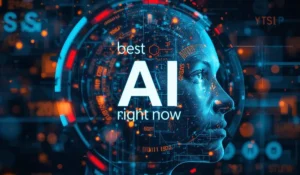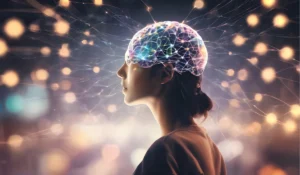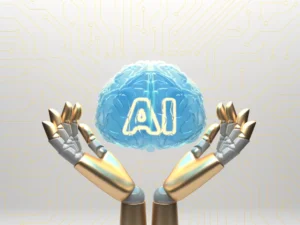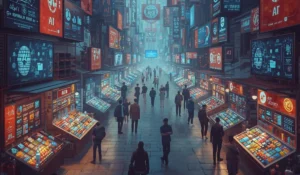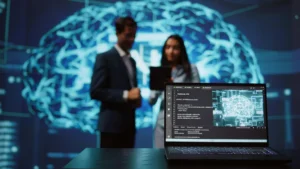AI tools for visual design are revolutionizing how brands, marketers, and creative professionals create stunning visuals. With increasing demand for high-quality digital content, designers are under pressure to produce unique graphics quickly, while also maintaining consistency across all platforms.
Fortunately, AI-powered visual design tools simplify this process by automating repetitive tasks, streamlining workflows, and inspiring creativity. This guide explores the top AI design tools, their benefits, real-world applications, and how they are reshaping the creative industry in 2025.
AI Design Tools Changing Creativity

Traditional design methods often take hours, requiring advanced technical skills. In contrast, AI in design enables faster production while maintaining high-quality results. These tools allow businesses to scale content creation efficiently, maintain consistent branding, and experiment with innovative design concepts.
Small businesses, solo entrepreneurs, and large teams alike can leverage artificial intelligence design platforms to produce professional visuals without extensive expertise.
Key Benefits of AI: Powered Visual Design Tools
One of the most significant advantages of AI design tools is speed. Tasks that once required manual resizing, cropping, or color correction can now be completed in seconds. Professionals can focus more on creative strategy rather than repetitive work.
Cost savings are another benefit. Hiring a team of designers for every project can be expensive, but AI-powered visual design tools provide affordable alternatives without sacrificing quality.
Creativity is also enhanced. Tools such as Runway ML and Jasper Art suggest design elements, layouts, and color palettes, helping users generate ideas they might not have considered on their own. Even beginners can produce polished visuals using intuitive platforms like Canva AI. Additionally, AI ensures brand consistency, automatically applying logos, typography, and color schemes across multiple visuals to maintain a cohesive identity.
Top AI Design Tools in 2025

Canva AI: Beginner-Friendly AI Design Tool
With features like Magic Design and Text-to-Image, Canva AI allows users to create social media graphics, presentations, and marketing visuals quickly and easily. The platform is particularly suitable for beginners looking for professional-quality results.
Adobe Firefly: Professional AI Visual Platform
Adobe Firefly integrates with Photoshop to provide text-to-image generation, background editing, and advanced adjustments. It’s ideal for professional designers seeking powerful, AI driven tools.
Fotor AI: AI Tool for E-commerce and Photo Editing
Fotor focuses on enhancing product photography with background removal, photo retouching, and image enhancement features. It is especially useful for online retailers looking to improve visual content quality.
Runway ML: AI-Powered Video and Design Tools
Runway ML allows users to edit videos, generate animations, and apply special effects using AI, making it an efficient tool for content creators. Consequently, it helps save time while producing professional-grade video content with minimal effort.
Jasper Art: AI Tool for Original Visuals
Jasper Art generates copyright-free images from simple text prompts, making it an efficient solution for marketers, bloggers, and content creators. As a result, users can quickly obtain original visuals without spending hours on design work.
Practical Applications of AI in Visual Design

AI design tools are widely used in digital marketing. Teams can produce high-quality graphics for social media, email campaigns, and ads faster than ever. In e-commerce, AI platforms enhance product images, retouch photos, and create consistent visual branding, boosting conversions. Learn more about top AI tools for creative design.
For startups, AI-powered logo and branding tools provide cost-effective ways to develop multiple design concepts. Web and app designers also benefit, as AI recommends layouts, icons, and color schemes that enhance user experience. Additionally, video creators can leverage AI to produce animations, edit footage, and add effects, making high-quality video content accessible to more users.
Challenges of AI Design Tools
Despite their advantages, AI-powered visual design tools come with some limitations. Originality may be an issue, as AI can produce visuals similar to existing content. Copyright restrictions also need to be considered, and over-reliance on automation can reduce creative skill development. Without customization, AI-generated visuals may appear generic or repetitive.
Best Practices for Using AI Design Tools
AI should complement human creativity rather than replace it. Customizing AI-generated visuals ensures that content aligns with your unique brand identity. Staying updated on AI trends helps designers make the most of new features, while careful attention to copyright and licensing policies ensures safe commercial use.
Future of AI: Powered Visual Design
The future of design lies in AI in design combined with human creativity. Hyper-personalized visuals will be tailored to audience preferences, while 3D and AR integration will create immersive experiences. Collaborative AI platforms will improve workflow efficiency, and sustainable AI practices will optimize resources and reduce waste. Overall, AI tools will enhance the creative process rather than replace the designer.
Conclusion
In summary, AI-powered visual design tools are transforming how businesses and creators produce visuals. They not only enhance efficiency but also reduce costs and inspire innovation, while simultaneously keeping professional quality design accessible to everyone, and enabling faster adaptation to evolving digital trends.
Moreover, integrating AI into your workflow ensures you remain competitive in a fast-evolving digital landscape. As a result, teams can focus on creative strategy instead of repetitive tasks. Additionally, AI tools facilitate collaboration, streamline processes, and allow designers to experiment confidently. F
or more insights on leveraging AI in design, explore AI tools for creatives. Consequently, businesses and individuals can scale visual content production faster and with higher quality, unlocking innovation while saving time and resources.
Furthermore, by combining human creativity with AI innovation, the possibilities for visual design are virtually limitless. Therefore, embracing these technologies today will lead to better branding, more engaging content, and stronger audience connections.Learn more about Adobe’s AI design innovations.
FAQs
1. What are AI tools for visual design?
Software platforms powered by AI that help users create, edit, and enhance graphics, videos, and branding assets efficiently.
2. Who can use AI design tools?
Both beginners and professionals, as tools like Canva AI and Adobe Firefly offer accessible interfaces with advanced features.
3. Will AI replace graphic designers?
No. AI supports efficiency but cannot replicate human creativity, storytelling, or emotional design.
4. Are AI-generated visuals copyright-free?
Some platforms provide copyright-free content, like Jasper Art. Others may have restrictions.
5. Which AI design tool is best for businesses?
Canva AI is perfect for general use, while Adobe Firefly suits professionals needing advanced features.


